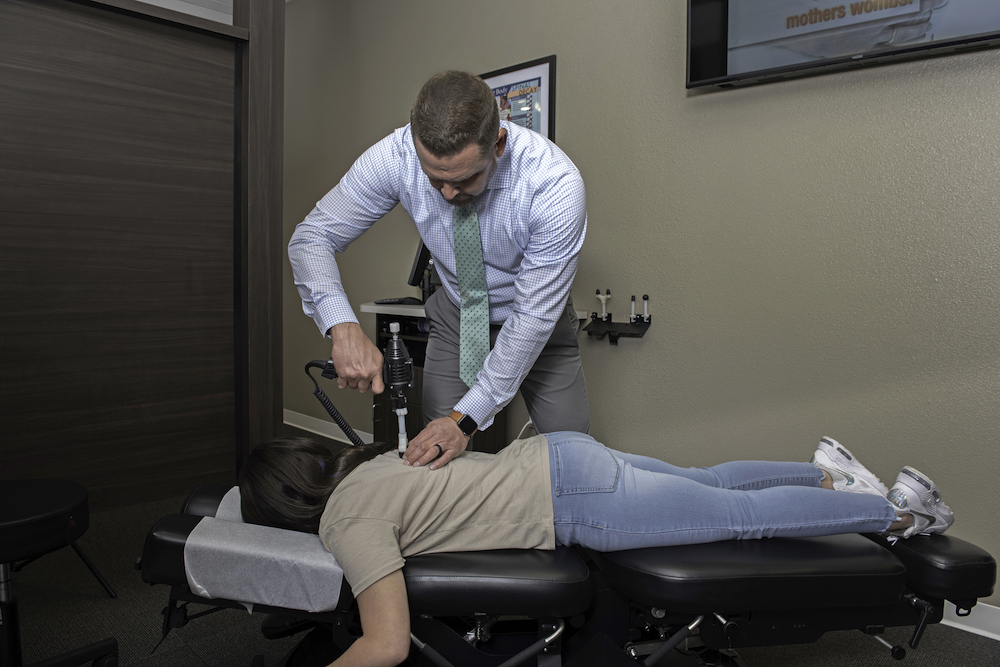4 Signs of Spinal Stenosis and Ways You Can Relieve the Pain Without Surgery
4 min read

Spinal stenosis is a narrowing of the spaces in your spinal column, usually in the lower back or in the neck. The narrowing puts pressure on nerves that pass through the spinal column which causes pain, tingling, numbness, muscle weakness, and walking problems. While there isn’t a cure, treatments, including chiropractic care, can reduce back pain and other effects as well as improve your ability to move around.
What Causes Spinal Stenosis?
As we get older, osteoarthritis can wear down the joints of the spine and lead to the overgrowth of bone, usually as bone spurs, inside the spinal canal. This narrows the space and puts pressure on nerves, often causing sciatic nerve pain.
The narrowing of open spaces in your spinal column can also be the result of:
- Herniated discs. Spinal discs are the soft, flexible cushions between each bony vertebra that permit your spine to bend and absorb shocks. With aging, discs tend to dry out, allowing cracks or ruptures in the outer covering. This lets the inner material ooze out and presses on the nerves or spinal cord.
- Injuries or trauma can cause broken or dislocated vertebrae. Displaced bone fragments can damage the contents of your spinal canal. After back surgery, there may be swelling of surrounding tissue, putting pressure on nerves.
- Thickened ligaments. Ligaments are thick, tough cords that hold the bones of your spine together. With aging, they can stiffen and bulge into your spinal canal.
- Tumors are abnormal growths that can form inside your spinal canal, putting painful pressure on nerves.
What are Spinal Stenosis Symptoms?
Some people don’t have symptoms. If symptoms develop, they’re mild at first but usually get worse over time. The five most common symptoms are:
- Sciatica (lumbar radiculopathy) occurs with lower back nerve compression. Sciatica usually affects one leg at a time. Pain and weakness can occur in your lower back, buttocks, thigh, calf, or foot. The pain can feel like tingling, a pins-and-needles sensation, and weakness or numbness in the area affected by the compressed nerve.
- Gait (walking) problems. Spinal stenosis in the neck can cause difficulty maintaining your balance while walking, especially in the dark. Lower back, spinal stenosis causes gait problems due to foot drop, or dragging of the foot while walking. It can cause muscle weakness in your thighs and lower leg muscles. Gait problems may not be noticeable until it results in falls, which bring attention to the issue.
- Radiating arm pain can cause your hands and arms to feel weak and/or painful. This is more common if you have cervical stenosis (neck stenosis). Pain can be mild to moderate or severe burning or shock-like pain. Pain is most common in the neck, shoulder, or arms. You may also feel tingling, a crawling sensation, or numbness in both hands.
- Loss of fine motor skills can be caused by spinal stenosis in the neck. Pain and a loss of hand dexterity can prevent you from gripping an object, holding a pen, writing or typing, or buttoning a shirt. Very rarely, spinal stenosis can cause incontinence, numbness in the inner thighs and genital area, and severe weakness in both legs. If severe symptoms occur, immediate medical treatment is needed to prevent permanent loss of leg function.
Spinal Stenosis Treatment Options
It’s important to see your doctor for a diagnosis if you have any of the symptoms listed above. Although it’s rare, untreated stenosis can mean permanent nerve damage causing permanent incontinence, numbness, weakness, and balance problems, leading to paralysis.
Even if you have no muscle weakness, spinal stenosis can lead to a slow, steady loss of leg strength.
Diagnosis includes a physical exam and a history of your symptoms. An MRI or CT scan can determine the cause and help establish your best treatment options.
Chiropractic care is among the various ways to treat spinal stenosis. Here are some of the most common ways spinal stenosis is treated.
- Modify normal activities. You may be more comfortable walking by leaning on a walker or bent forward to relieve pressure. Try a stationary bike for exercise instead of walking. Lean forward on the handlebars as you pedal. Sit in a recliner instead of a straight chair. Prevent your neck from moving in a painful way with a neck or back brace. A brace should only be worn for short periods of time to avoid further muscle weakness.
- Chiropractic treatment treats the cause of the pain with non-invasive, drug-free treatment. It can be used in combination with other treatments if needed. Chiropractic treatment for spinal stenosis can include spinal decompression, especially good if you have lower back stenosis (lumbar stenosis). You can gently stretch out the spine to help relieve pressure using our Back-on-Trac gentle traction process. Several visits are usually needed to start to feel relief for most patients.
Other chiropractic treatments for spinal stenosis include electrical muscle stimulation and cold laser therapy for promoting blood flow and reducing inflammation in the spinal cord area, ultimately reducing pain. - Physical therapy helps you build flexibility and strength to support your spine. After a supervised physical therapy program, most people follow an exercise plan on their own. It’s important to remain active to avoid muscle weakness that robs your spine of support. Some patients start a chiropractic care program after they’ve completed the physical therapy sessions.
- Pain relievers such as Tylenol can reduce pain; nonsteroidal anti-inflammatory drugs (NSAIDs) can relieve pain and reduce inflammation. Muscle relaxers and nerve-desensitizing medications can help. A short course of opioids may be prescribed for severe nerve pain but other pain management methods are recommended to avoid long-term use of prescription pain medications.
- Epidural steroid shots, given directly in the back, can reduce inflammation and pain. This can bring temporary relief to let you continue with physical therapy.
Research from the American Chiropractic Association has proven that chiropractors can successfully address injuries and chronic conditions instead of just treating symptoms. It’s important to address your pain as early as possible so that it’s easier to treat, and so hopefully you can avoid surgery or long-term use of pain medications.
At Village Chiropractic, we use state-of-the-art techniques to help relieve the pain of spinal stenosis. Request an appointment today at our office in The Woodlands and start feeling better soon!





